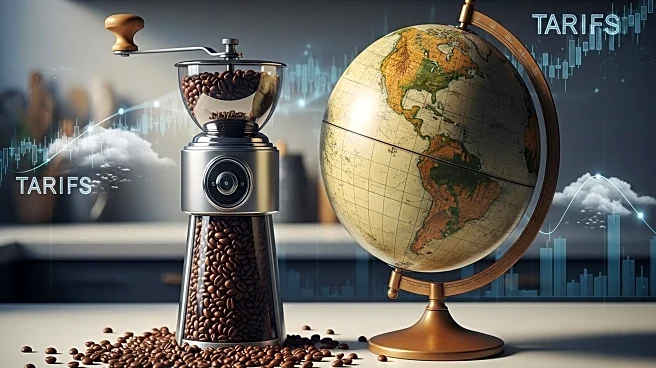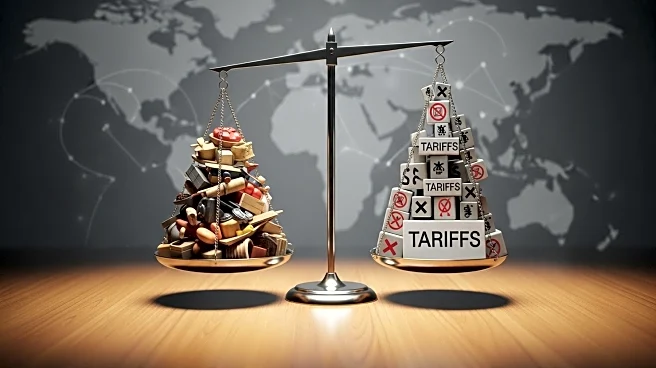What's Happening?
The prices of several everyday grocery items in the U.S. have reached near-record highs due to a combination of tariffs, bird flu, and severe weather conditions. Ground beef, in particular, has seen a significant price increase, now costing over $6.60 per pound, marking an all-time high. The consumer price index indicates a 0.4% rise in inflation in August, with consumer prices approximately 2.9% higher than the previous year. This increase is largely attributed to tariffs imposed by President Trump. The U.S. Department of Agriculture reports a decrease in bird flu cases, which had previously affected millions of birds, leading to a drop in egg prices. However, the number of affected flocks has recently doubled, raising concerns about future price spikes. Other items like milk, bananas, and oranges have also seen price increases due to tariffs and supply chain disruptions.
Why It's Important?
The rising grocery prices have significant implications for U.S. consumers, particularly those with limited budgets. The increase in food costs can strain household finances, leading to reduced purchasing power and potential changes in consumer behavior. Industries reliant on these goods, such as restaurants and food manufacturers, may also face increased operational costs, potentially leading to higher prices for consumers. The tariffs, a key factor in these price hikes, reflect broader trade policy decisions that can impact international relations and domestic economic stability. The ongoing bird flu situation poses a risk to poultry and egg supply chains, potentially leading to further price volatility.
What's Next?
As bird flu cases rise with the changing seasons, there is potential for further disruptions in the poultry and egg markets. The U.S. Department of Agriculture and other stakeholders may need to implement measures to control the spread of the virus and stabilize prices. Additionally, the impact of tariffs on food prices may prompt discussions among policymakers about trade policies and their effects on the economy. Consumers and businesses alike will need to adapt to these changes, potentially seeking alternative products or suppliers to mitigate cost increases.











